Average sizes and life expectancy for this breed:
American Burmese cats are the perfect candidates for winning over those who say they are not fans of felines. With their huge expressive eyes, friendly personalities, and dog-like tendencies, these cats will soften even the most strongly opinionated people!
It's hard to not fall in love with these adorable cats. Burmese cats come in two distinct varieties; American and European. Both breeds are incredibly social and will swiftly learn to play interactive games like tag or fetch as well as any dog. They are so intelligent and playful that even "non-cat people" will struggle to resist their charms. They are both also stunning to look at, with close-lying glossy coats and expressive eyes. The difference between the two can be seen in their appearance. The American Burmese is more rounded, wheras the European Burmese is more slender and oriental-looking.
Both American and European Burmese are sweet and delightful feline companions, that are strongly people-oriented – these cats love to curl up on any available lap. They also enjoy joining in with family playtime. These cats are known to follow their humans around the house, even diving under the covers with you. Because of the highly affectionate nature of Burmese, they are extremely tolerant of children and other pets, and they adore a good cuddle.
It’s worth noting that all Burmese cats tend to struggle if they are left alone for long periods. So, you will need to ensure that someone is home for most of the day. Burmese cats have softer voices than their Siamese cousins, but they still enjoy "chatting" with their human companions about the events of their day.
Because of their intelligence, Burmese cats thrive with families who are keen to teach them tricks and commands, play games, and provide plenty of interactive toys. They are happy with families who can give them plenty of love and attention.
See available kittens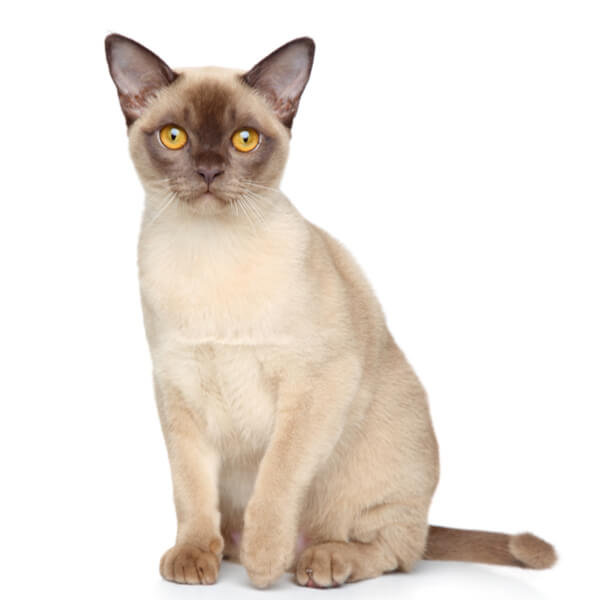

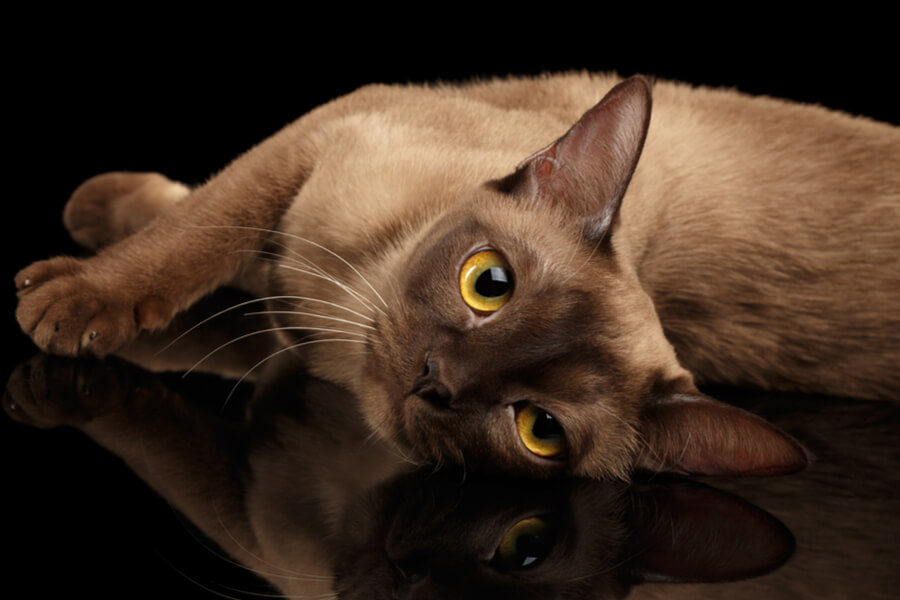


Burmese cats are known to have roamed Burma, Malaya, and Thailand for centuries. They were first imported into America in the 1930s, when Dr. Joseph Thompson brought a small brown female, named Wong Mau, from Burma. However, at this time, Burmese cats were not recognised as a distinct breed. Instead, they were often referred to as Chocolate Siamese. Dr. Thompson conducted breeding experiments with Wong Mau because he didn’t believe she was a Siamese.
When Wong Mau was bred with a seal-point Siamese cat called Tai Mau, the resulting litter appeared to be Burmese/Siamese hybrids, as well as pure Siamese cats. The cats that looked like Burmese/Siamese hybrids were bred with each other to produce the deep, dark Burmese we know today. Most modern Burmese cats can trace their lineage right back to Wong Mau, whether American or European.
Unfortunately, in 1947, hybrids started to appear in the show hall instead of pure Burmese cats. Whether this was down to a lack of knowledge or the fact that these cats had become so popular that demand outweighed supply, no one knows. One of the violations of the Cat Fanciers' Association's show rules was showing hybrids. For that violation, recognition of the Burmese breed was withdrawn. They were not reinstated as a recognised breed until 1953 when the Burmese Cat Society of America had brought the situation back under control.
The first record of a blue Burmese kitten being born was in the 1940s. However, he was never bred because most Burmese breeders selected to only breed the sable. For years, breeders believed that any kitten born with a different coat colour to the recognised sable was the result of hybridisation and mis-mating. However, it’s now believed that the genes responsible for colour dilution were present in the gene pool from the very start.
It wasn't until 1949 that the American Burmese was exported to England. From here, the distinct American and European breeds began to take shape. In 1959, a set standard for the American Burmese was set by the Cat Fanciers Association, which included a rounded appearance. By 1994, the European Burmese was officially recognised in the UK.
By the 1970s, blue, champagne (known as chocolate in the UK), and platinum (lilac in the UK) kittens were accepted as recognised coat colours of the American Burmese. The European Burmese has 10 distinct coat varieties including red, cream, and chocolate tortoise.
The Burmese were one of the original breeds recognised by The International Cat Association in June 1979.
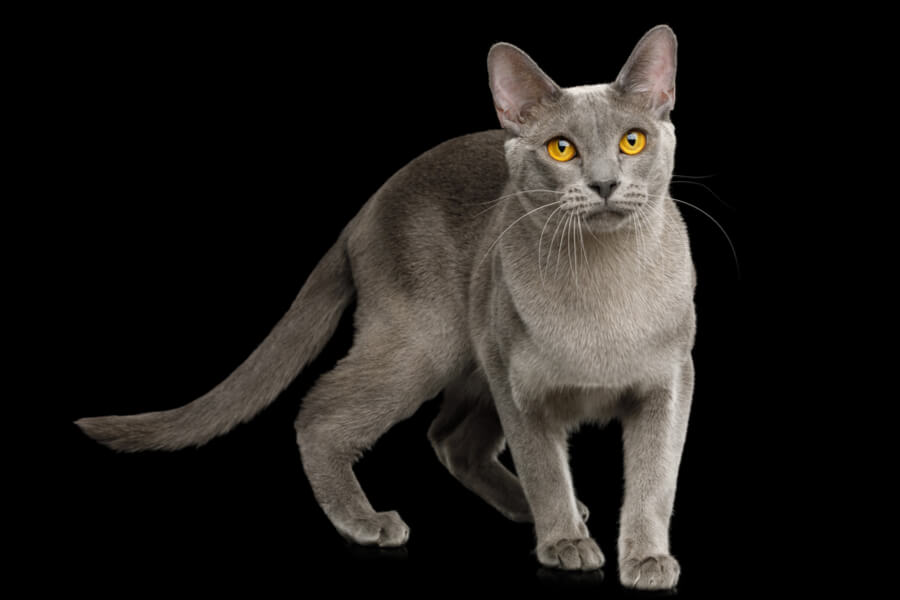
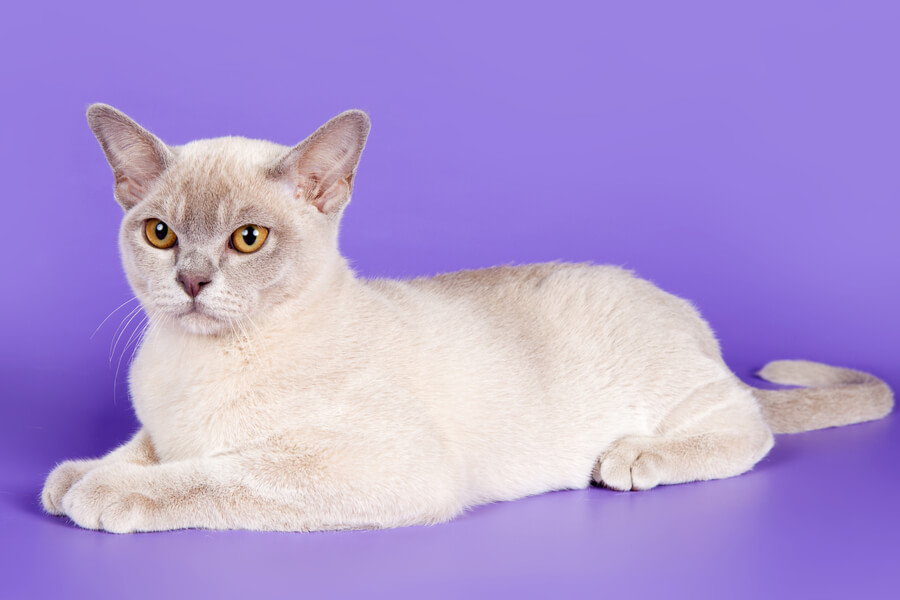
American Burmese are medium-sized cats, but they feel considerably heftier than they appear. They are slightly compact but muscular cats, with heavy boning. Unlike their European Burmese cousins, American Burmese cats have a rounded appearance. Their heads, tips of their ears, expressive eyes, chin, and even their feet are rounded. European Burmese have noticeably slanted eyes and a more triangular shaped head with a strong chin and low set ears. Their overall appearance is more slender and oriental compared to the American Burmese.
Both of these cat breeds are incredibly muscular in appearance and in feel which gives them their excellent strength and agility.
The coat of both the American and European Burmese is short and glossy. It has darker shading on the points in kittens, but this shading disappears as they age and transforms into a solid rich colour in adults.
Recognised coat colours of the American Burmese are sable, platinum, blue, and champagne. European Burmese cats come in a much wider range of colours such as variations of tortoise colouring, red, brown, and blue. Despite the variation in coat colour, all Burmese cats have hypnotic gold or amber eyes.
While the recognized coat colours for both American and European Burmese have increased over the years, the considerable majority of Burmese cats are still the traditional deep brown or sable.
Both European and American Burmese cats are active and friendly cats. They have the charm and willpower of their Siamese ancestors and chat just as much. However, their voices are softer and more delicate. They are very intelligent cats that look for human companionship every moment of the day, which is why they are not best suited to homes where the owners are out of the house for long periods. If no one is home, it’s best to ensure they have the company of another pet.
These cats are known to get along with other cats and dogs. But, you must ensure that they have been introduced properly as some Burmese cats will reject the addition of a new pet in the home. Purchasing another Burmese is the best option. American and European Burmese cats will get along well with each other because they have very similar temperaments.
American and European Burmese cats are about as inquisitive as you can get! Expect them to explore your home from room to room and know all of its corners and crevices. They are playful and remain so until they grow old. Stimulate their bright minds with numerous interactive toys and teach them tricks that they can show off to a willing audience.
A Burmese is an excellent choice for people who don't object to a complete loss of privacy. These breeds will need to be involved in everything you do! They will sleep on your bed and may even snuggle under the sheets with you. When you are sitting down, they will be in your lap or right beside you, eagerly awaiting to be petted.
There is a slight difference in temperament between male and female Burmese cats. Females are the embodiment of queenliness! They expect attention and love to be in charge. Males Burmese are more peaceful cats that are satisfied as long as they are near you (or preferably on you!). Whichever you select, you may soon find yourself longing for another.
Burmese kittens can be pretty strong-willed in both the American and European varieties. They are playful and courageous, attempting activities beyond their means and regularly landing on their tough little rear ends! As they mature, the exceptional intelligence of this breed will expose itself and they will soon grow into poised and delightful little felines that will rule your house and your heart.
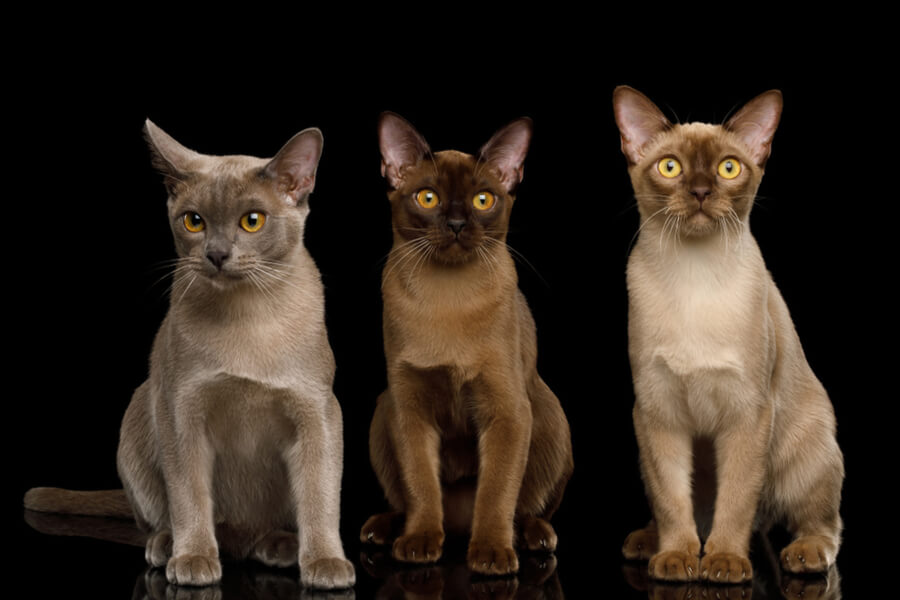
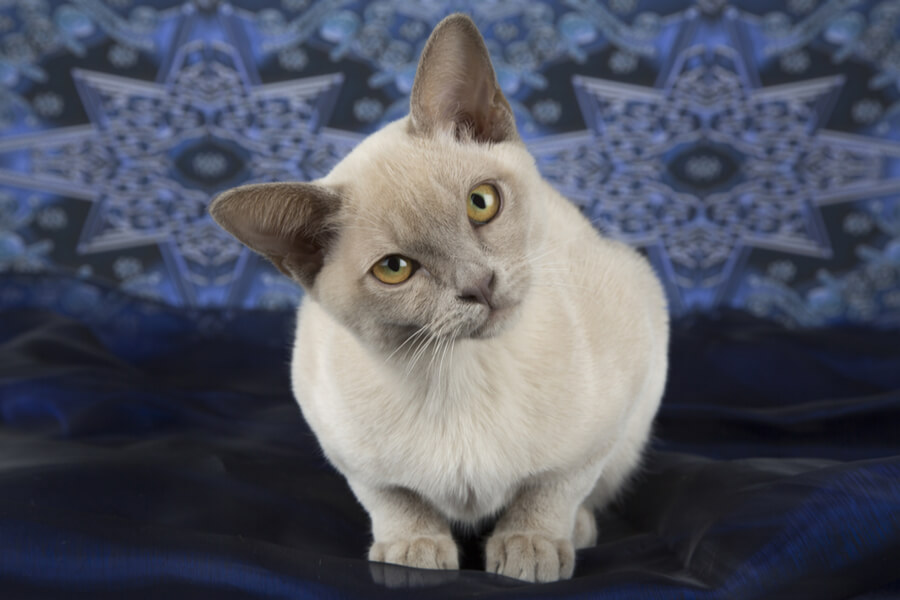
American and European Burmese cats are very social, loving, and develop intense bonds with their human companions. When a Burmese is properly socialized and trained during kittenhood, it will grow up to be a well-mannered and well-rounded cat.
Challenge their bright minds and keep them attentive by teaching them commands, games, and tricks. Give them a good variety of puzzle toys and reward them with treats or kibbles when they learn how to manipulate them. Burmese are known to be some of the most intelligent cat breeds on the planet and adore the love and attention that comes with being clicker-trained.
The satin-like coats of American Burmese cats are fairly low maintenance. Grooming them weekly with a rubber brush to eliminate loose hairs will polish their coat and maintain the signature high glossy appearance this breed is known for. The oils from your hands when you pet or stroke the coat will also help to keep its balance. In addition, it is advisable to regularly wipe over the coat with a chamois to retain a nice sheen. A bath is hardly needed unless they are muddy or dirty. The same care goes for the European Burmese as both breeds have the same coat type and grooming needs.
Cats must get used to combs and brushes from an early age to avoid matted fur. There is a wide variety of combs and brushes available on the market, depending on what works for you and your cat. You can start with a very soft brush that does not pull at fine kitten fur or damage their skin. Each time you have finished brushing, give a small treat. If regular coat care does not cause any issues or problems for you or your cat, you can try more effective combs and brushes when they reach adult age.
Daily dental hygiene is best but weekly brushing is considered to be adequate. Brushing a cat's teeth is essential as it helps to prevent periodontal disease. You may also want to keep an eye on their claws and trim them when required. However, a good scratching post will also do the job. For their eyes, wipe the corners with a soft, damp cloth to eliminate any discharge. Make sure to use a separate part of the damp cloth for each eye to avoid the risk of spreading any eye infections.
Check the ears weekly. If their ears look dirty, wipe them out with a cotton ball or soft damp cloth moistened with a vet-approved ear cleaner. If the ear has a foul odour, it’s best to contact your vet for treatment.
Regardless of breed, cat litter boxes should always be clean as felines are very particular about bathroom hygiene. If a litter box is left unclean, your cat may choose to use other areas of the house.
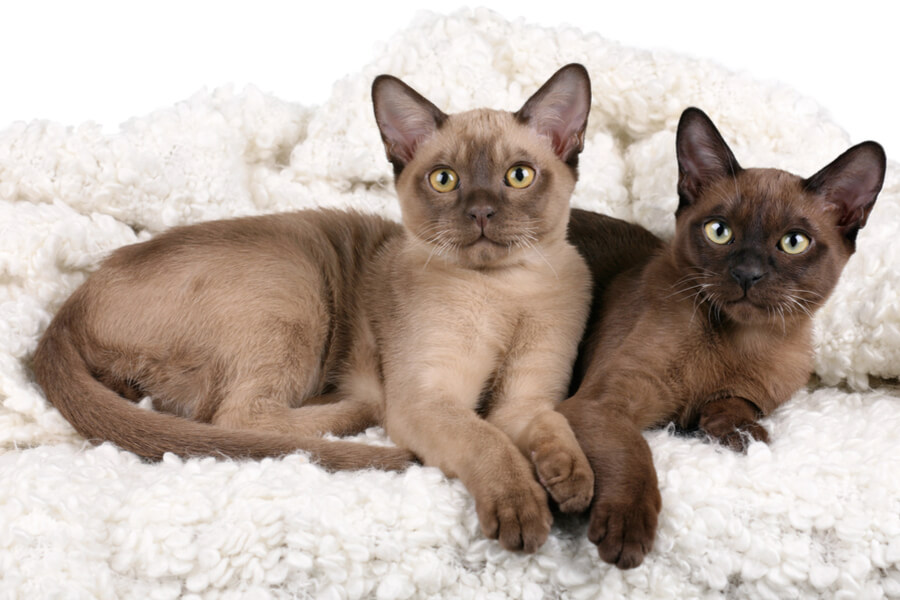
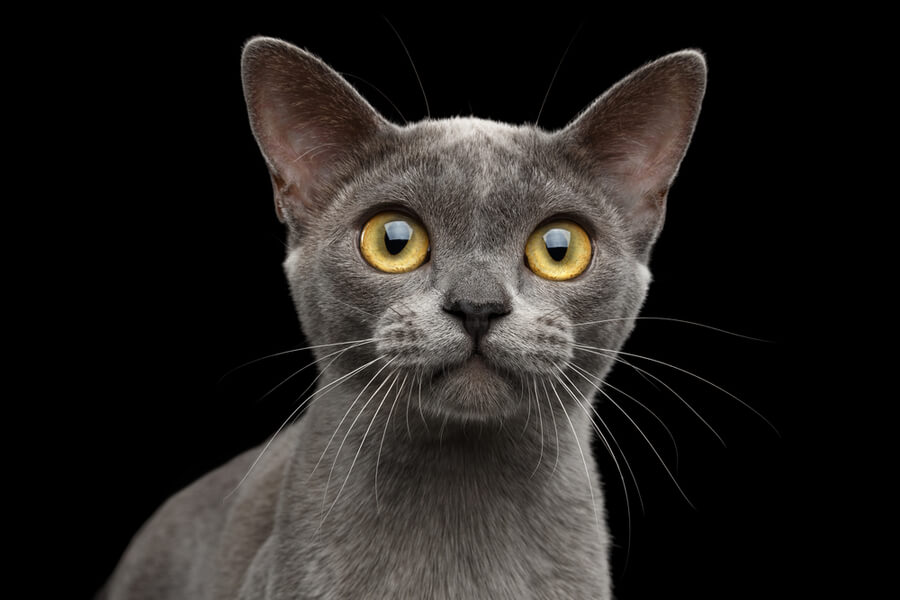
Burmese are generally healthy cats but both varieties are known to suffer from certain health conditions that you need to know about if you are considering adopting one of these cats. Their life expectancy is between 12 and 16 years with proper care, exercise, and a high-quality diet. Always purchase a Burmese kitten from a reputable breeder to ensure they have been well cared for. A good breeder will also be able to perform DNA tests to ensure no underlying health issues are present.
The health conditions that seem to affect the American and European Burmese breeda are:
The friendly and easy-going American and European Burmese breeds enjoy playing which makes them an excellent choice for families with children. However, you should always supervise younger children when they are interacting with your cat, to avoid any incidents.
All Burmese cats make delightful companions that are generally content living with other cats and cat-friendly dogs, as long as they have been introduced properly. It’s best to introduce new pets when your Burmese is a kitten, to ensure the new addition is accepted.
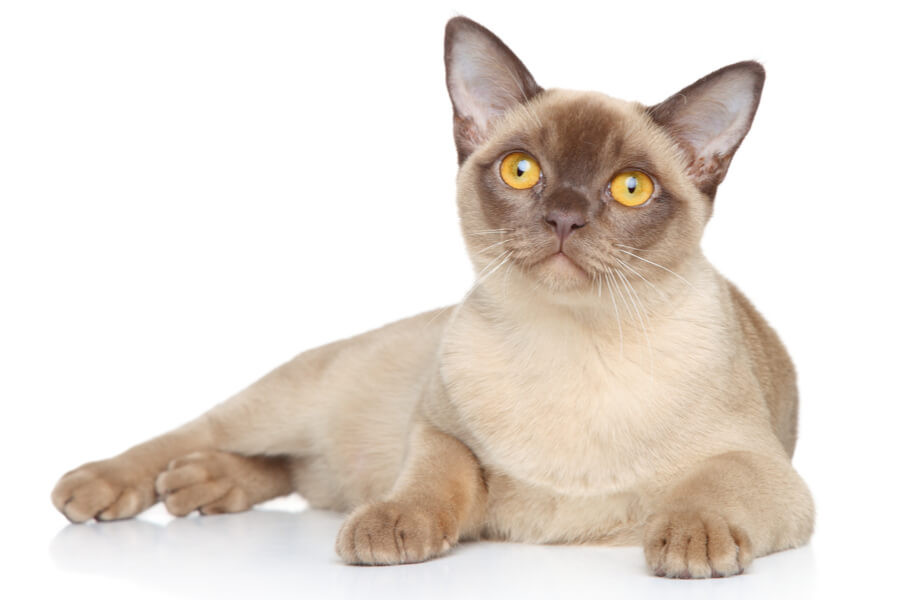

We can connect you with Breeders that are specialized in this particular breed.
See available kittens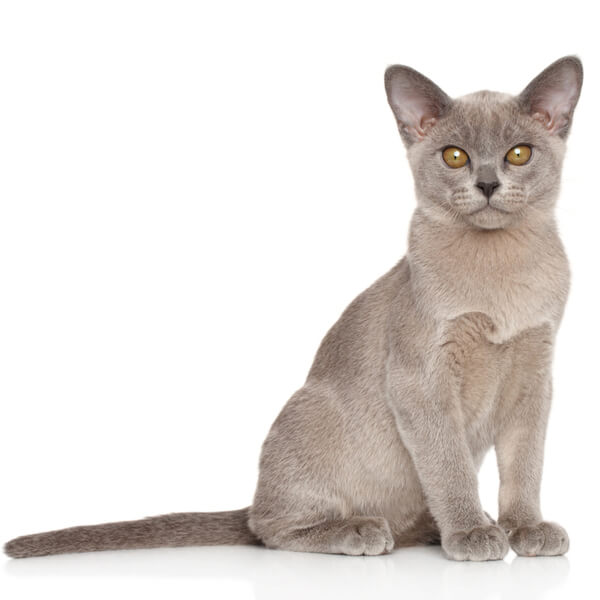
Myanmar
Size : Medium
Coat : Short
Registration : CFA
Vocality : High
Hypoallergenic : Yes
Grooming : Once a Week
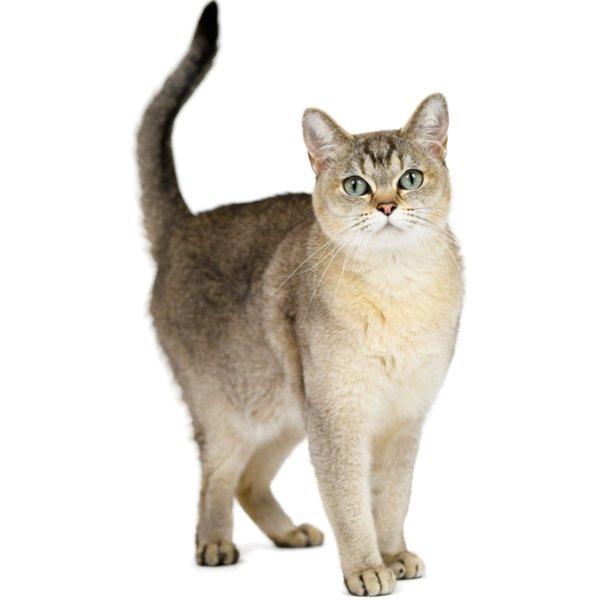
United Kingdom
Size : Medium
Coat : Short
Registration : GCCF, TICA, CFA, FIFe
Vocality : Low
Hypoallergenic : No
Grooming : Once a Week
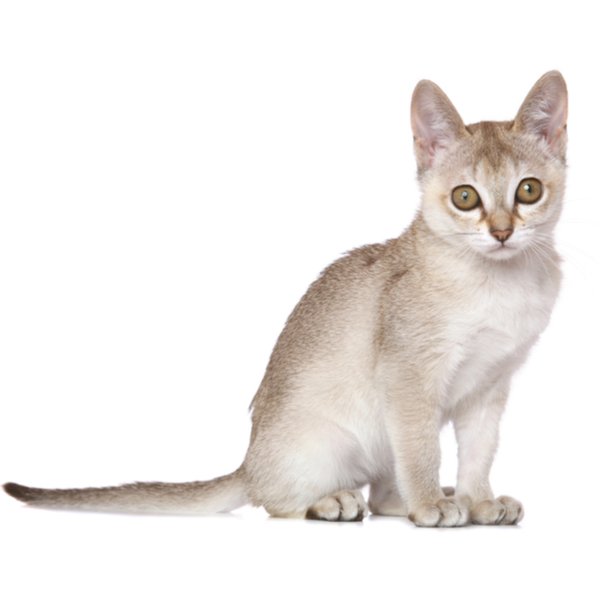
Singapore
Size : Small
Coat : Short
Registration : GCCF, TICA, CFA, FIFe
Vocality : High
Hypoallergenic : No
Grooming : Once a Week
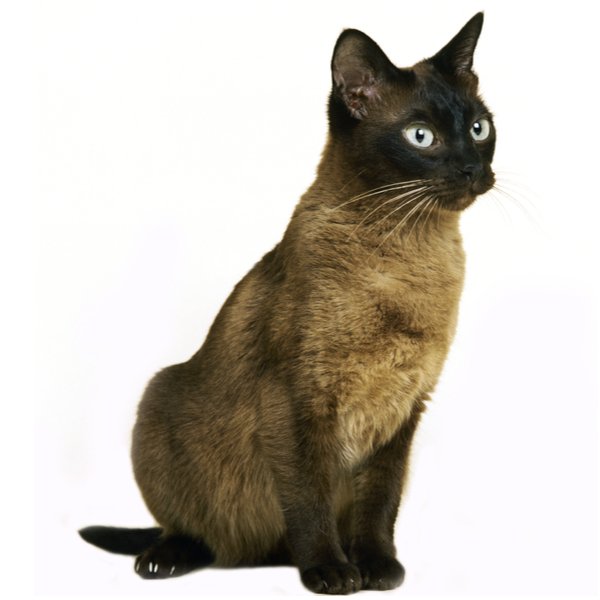
Thailand
Size : Small
Coat : Short
Registration : GCCF, TICA, CFA, FIFe
Vocality : High
Hypoallergenic : No
Grooming : Once a Week


Need some advice?
Whether you're a first time pet owner, an experienced pet owner, a new or long-time breeder, or just curious about pets, we've got you covered!

January 17, 2024
What Is The Personality Of Russian Blue Cats?
Russian Blue cats are most known for their distinctive shimmery blue-silver coat and piercing green eyes. However, this breed’s calm and gentle temperament is what makes them shine the most in the feline world.

January 17, 2024
10 Facts About Russian Blue Cat Breed
Russian Blues are one of the most aesthetically stunning cat breeds, with a gorgeous plush silvery coat and vibrant green eyes. However, it’s not only their appearance that is beautiful; their nature is too.

January 17, 2024
How To Choose The Right Cat Breed for You
Cats can make the most fantastic animal companions; they are adorable, friendly, and loving. However, not all felines are created equal. There are many different breeds, of which each has its unique personality traits.
Need some help?
Contact us to speak to our friendly advisor, who will gladly help you find your dream pet!



We are registered in England and Wales under registration number 12568840,
and our registered office is at 58-60 Kensington Church Street, W8 4DB London, England.
© 2023 The Pedigree Paws